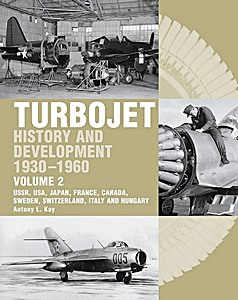Jet Engines - Fundamentals of Theory, Design and Operation
For those who wish to broaden their knowledge of jet engine technology and associated subjects. It covers turbojet, turboprop and turbofan designs and is applicable to civilian and military usage.
Starting with an overview of the main design types and fundamentals, it goes on to look at topics such as air intakes, compressors, and exhaust systems. Thrust augmentation and engine systems follow with chapters on environmental considerations and airframe integration concluding the work.
Szczegóły
| Autor: | Klaus Hunecke |
|---|---|
| Wydanie: | 224 strony, 22.5 x 16 x 2.1 cm, twarda oprawa |
| Ilustracje: | 80 czarno-białych zdjęć, 100 rysunki |
| Wydawca: | The Crowood Press Ltd (GB, 1997) |
| ISBN: | 9781853108341 |

Jet Engines - Fundamentals of Theory, Design and Operation
Język: angielski
Dostępne na Amazonie - bezpieczna płatność i szybka dostawa
Zamów na Amazon PLZamów na Amazon DE
Zamów na Amazon UK












